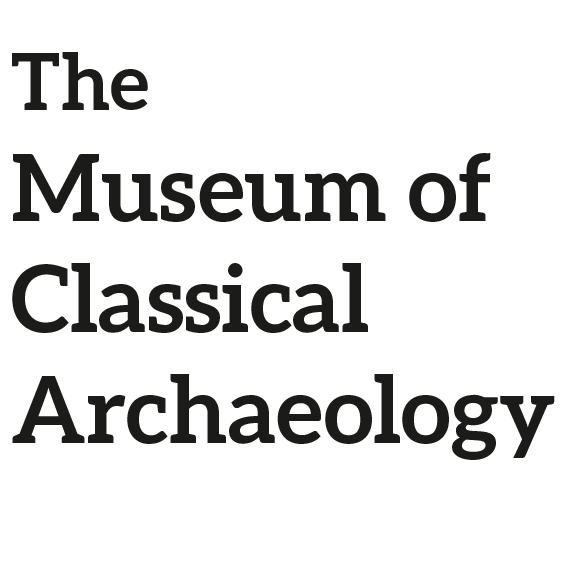Discover the Museum of Classical Archaeology through the eyes of its staff and volunteers. These resources were created in 2017 and capture a snapshot of the MOCA team at that time.
#1. Boy with Goose
by Jennie Thornber
Who can resist the charms of this toddler play-fighting with a goose? Surrounded by gods and heroes, who tower over him with their chiselled features and rippling muscles, it's easy for this chubby fellow to to be overlooked but this little cutie is a firm favourite of mine.
Find him in Bay H.
Image description: a white plaster baby boy is reaching upwards, while pressing his weight down onto his other hand - which is on the neck of a goose.
#2. Lion's head waterspout
by Sophie Hawkins
This lion smiles down at me as I walk past him every day, and I can't help but smile back. He once acted as a waterspout, channeling water off the roof of the Temple of Apollo at Bassae (c.420 BCE). He is a cheerful ancestor of modern gargoyles!
Find him in Bay D.
Image description: a white plaster lion's head with an open mouth, hung on the wall.
#3. Vespasian
by Hannah Price
The Roman emperor Vespasian (reigned 69-79) came to power in a brutal civil war, and throughout his reign maintained a bluff, soldierly persona. I love this portrait for the expression: you can't tell if Vespasian is about to roar with laughter, or headbutt you.
Find him in Bay J.
Image description: a white plaster head of an old man, bald and with wrinkles, frown lines and hooded eyes.
#4. Nikandre
by Michael Loy
This lovely lady was dedicated to the goddess Artemis on the island of Delos at the end of the seventh century BCE. Her patron - named as Nikandre on an inscription on the statue's left leg - was from another island, Naxos, and the original is made from marble from a third island, Paros. She's quite cosmopolitan really!
Find her in Bay A.
Image description: a plaster figure of a woman, head only, with a battered face and long hair hanging in braids.
#5. A wounded warrior
by Polina Gordovich
This warrior from the East Pediment of the Temple of Aphaia dates to c.505-500 BCE and is right on the border between Archaic and Early Classical styles. I love the contradiction - his body is twisted in pain, but he looks happy about it.
Find him in Bay B.
Image description: a plaster figure of a naked man, naked but wearing a helmet and with a shield on his arm, reclining as if in pain.
#6. The Tetrachs
by Hanneke Salisbury
This stands out as part of the Cast Gallery's architecture and also for its rich purple colour. Both refer back to the rich purple porphyry original from c300 AD, now in a corner of St Mark's Basilica in Venice. This image of the short-lived Tetrachy ("rule of four") shows us a united front of identical Roman emperors. But look closer: there are some differences between them and a hint of tension in the way they all clutch the bird-shaped hilts of their swords...
Find them in Bay K.
Image description: four figures, rendered in a purple medium, wrapped around a corner and hugging each other in pairs.
#7. Terme Boxer
by Katie Philips
This is a rare surviving ancient bronze, found in Rome. To me it's one of the most intensely emotional objects in the collection: the Boxer's almost plaintive expression contrasts starkly with the brutality he has just taken part in. The cuts, broken nose and cauliflower ear make this a characterful glimpse into the life of an ancient athlete.
Find him in Bay J.
Image description: a bronzed cast of a bearded man, seated and looking to one side with cuts to his nose and face, and a swollen ear.
#8. Tyche of Antioch
by Alina Kozlovski
The Tyche of Antioch is a goddess of fortune. I like her because she rests her foot on a personified river like it's no big deal and wears the city she protects on her head. This is not a goddess anyone would want to mess with.
Find her in Bay G.
Image description: A seated woman, draped in a cloak across her body, holding wheat sheaves in her hand and wearing an elaborate headdress.







